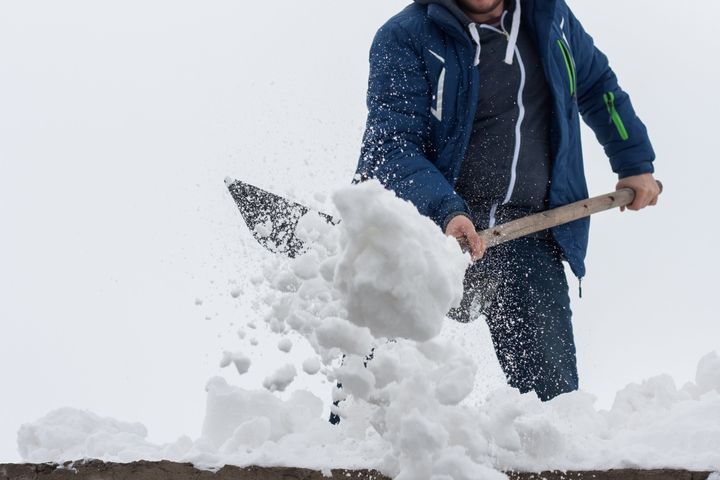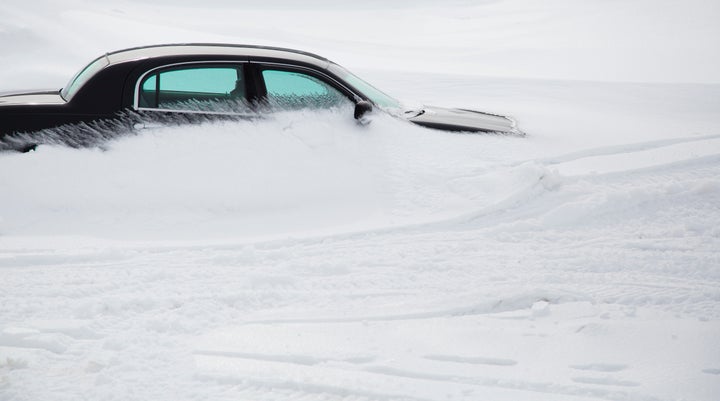Unusually cold weather has been linked to more than 20 deaths this week, with road accidents or exposure taking the blame.
With the frigid weather stretching across a vast swath of the country ― especially the Midwest ― here’s some advice on how to stay safe whether you find yourself outside, in your car or in your home.
It may sound like a given, but please dress warmly
When it comes to dressing properly for cold weathers, the Centers for Disease Control and Prevention’s website offers several pointers.
One is wearing water-resistant coats and shoes, as wet clothing chills the body rapidly. The CDC also recommends mittens over gloves because they trap the heat of your entire hand in one area. Wearing a hat is also essential, even if you don’t really lose all your heat from your head as once believed.
Minnesota’s Department of Public Safety recommends wearing a scarf, as it will not only keep your neck warm but can be used to cover your mouth to protect your lungs from extremely cold air.
The CDC also recommends wearing a wind resistant outer layer and wool, silk or polypropylene inner layers of clothing, as those materials trap more body heat than cotton. If you start to sweat or feel too warm, take some layers off. Excess perspiration will increase heat loss.
Check out some more tips here.

Shoveling snow ― it can be more exerting than you think
Shoveling snow can be a particularly dangerous activity when it comes to heart health because of the amount of strain it can put on a person’s body, especially someone not used to such physical exertion.
“It’s quite a cardiovascular workout ― more than most people are used to,” Dr. Reed Caldwell, assistant professor in the emergency medicine department at New York University, told HuffPost.
Caldwell advised snow shovelers to take frequent breaks, stay well hydrated and to stop and seek medical attention if experiencing any chest pain, which could be a sign of a heart attack.
The CDC advises against drinking alcohol before or after shoveling, as liquor can cause people to underestimate the physical strain their body is under. Also, don’t eat a heavy meal before shoveling, as that can put an extra load on one’s heart.
Can’t get inside? Here are some tips on what to do
A wind chill of minus 25 degrees can freeze skin within 15 minutes, especially if the extremities ― like your fingers, nose, or ears ― are exposed, according to the National Weather Service.
That means staying inside is crucial during extreme cold. But if for some reason you cannot get inside, Caldwell advised the following three steps:
― Remove any wet clothing from your skin.
― Find an area where you are shielded from wind.
― Keep moving because that helps keep up your body heat.
One reason it’s so essential to stay dry is that water conducts heat away from the body 25 times faster than air because it has a greater density, according to a Princeton University guide on hypothermic and cold weather injuries.
Knowing the warning signs of hypothermia, which occurs when the body loses heat faster than it can produce, is vital. Those signs include confusion, shivering, difficulty speaking, sleepiness and stiff muscles.
In addition to looking out for yourself, be sure to look out for others who may be in need of help or are showing signs of hypothermia.
“It’s really nice if we all stick together and check on at-risk family members, check on at-risk neighbors,” Caldwell said. “Be aware of... populations that are going to be significantly impacted by weather.”
Those populations include the elderly, infants, the homeless and those who abuse drugs or alcohol, he said.
If you must drive, here are some tips on how to do it safely
Before leaving your house, make sure your vehicle is stocked with a winter car survival kit and at least a half a tank of gas so that you can stay warm if you become stranded, the National Weather Service advises.
A winter car survival kit recommended by the NWS contains the following items:
- Jumper cables: flares or reflective triangle are great extras
- Flashlights: Replace the batteries before the winter season starts and pack some extras
- First Aid Kit: Also check your purse of bag for essential medications
- Baby, special needs gear: If you have a baby or family member with special needs, pack diapers and any special formula or food
- Food: Stock non-perishable food such as canned food and a can opener, dry cereal and protein rich foods like nuts and energy bars
- Water: Have at least 1 gallon of water per person a day for at least 3 days
- Basic toolkit: Pliers, wrench, screwdriver
- Pet supplies: Food and water
- Radio: Battery or hand cranked
- Cat litter or sand: For better tire traction
- Shovel: To dig out snow
- Ice scraper: Even if you usually park in a garage, have one in the car.
- Clothes: Make sure you dress for the weather in warm clothes, gloves, hat, sturdy boots, jacket and an extra change of clothes for the cold
- Warmers: Pack extra for body, hands, feet
- Blankets or sleeping bags: If you get stranded in traffic on a lonely road, you’ll be glad to have it.
- Charged Cell Phone: Keep a spare charger in your car as well
AAA also has some guidance on its website on how to drive safely in the snow or ice.
One tip is to accelerate and decelerate slowly, which will better allow your vehicle to maintain traction and avoid skidding. Also take time to slow down before coming to a stop, as it takes longer to do this on icy roads. With this in mind, double the distance you would usually keep from the driver ahead of you.
But ultimately, stay home if you absolutely do not need to go out.
“Even if you can drive well in the snow, not everyone else can,” AAA warns.
Trapped in your car? Here’s what to do
If you become stuck in a car and need help, the CDC recommends attaching a brightly colored cloth to your car’s antenna or in the window as a signal for rescuers. Any items in the trunk that are needed should also be moved to the inside passenger area.
Check to make sure that there isn’t any snow blocking the car’s exhaust pipe, which can cause carbon monoxide to enter the vehicle. AAA similarly advises against warming up a vehicle in an enclosed area, such as a garage, for the same reason. If the exhaust pipe is clear, run the car’s motor and heater for about 10 minutes every hour to stay warm and crack open a window to let in air.
To keep warm, wrap your entire body, including your head, in whatever extra clothing, blankets or newspapers are available. As you sit, keep moving your arms and legs to improve your circulation. Also, refrain from eating unmelted snow, as that will lower your body temperature.

Beware of carbon monoxide while heating your home
Space heaters, while cozy, are involved in 74 percent of fire-related deaths, according to the American Red Cross.
To prevent an accidental fire, a great rule of thumb is to keep them at least three feet from other objects, especially potentially flammable ones like paper, curtains, bedding or rugs and carpet, the organization advises. Also, don’t forget to turn them off before leaving the room or going to bed.
As for using your oven as a heat supply, just don’t do it.
Most ovens give off carbon monoxide, which is a poisonous colorless and odorless gas that kills 170 people each year, according to the Consumer Product Safety Commission.
To better prevent such accidents, make sure your smoke alarms and carbon monoxide detectors are in working order.

